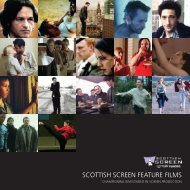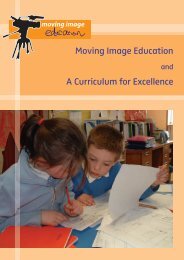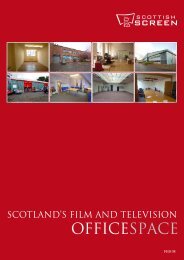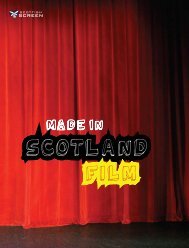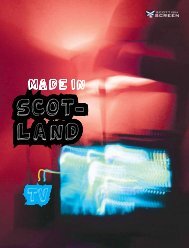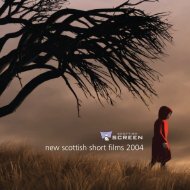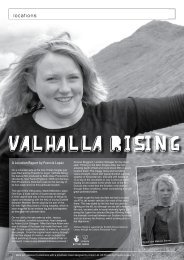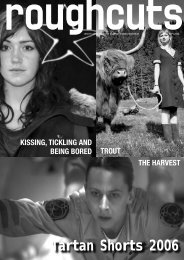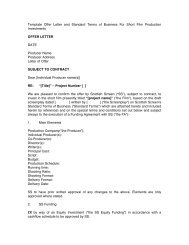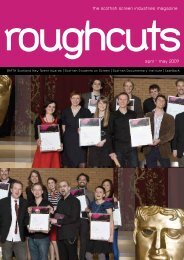Evaluation - Scottish Screen
Evaluation - Scottish Screen
Evaluation - Scottish Screen
You also want an ePaper? Increase the reach of your titles
YUMPU automatically turns print PDFs into web optimized ePapers that Google loves.
The lead practitioner employed a range of pedagogical techniques from writing vocabulary<br />
on the board as pupils generated it, to encouraging pupils to make connections with rhythm in<br />
the real world and worlds of music and film during the music section of some lessons.<br />
Throughout lessons, the lead practitioner demanded close observation from pupils, including<br />
the 3Cs and 3Ss, and the pattern of footfall when stamping out various rhythms.<br />
Observation of teachers<br />
During lessons in the first phase of the evaluation, teachers acted mostly as observers, taking<br />
notes for future reference. They also assisted by undertaking practical tasks such as writing<br />
vocabulary on the board and supporting pupils during storyboarding. At the second round of<br />
observations, this situation had completely changed and teachers undertook all classes on<br />
their own. Typically, after initial explanations by the teacher of the context and recall of<br />
roles, classes were generally pupil-directed.<br />
Teachers allowed pupils to generate the knowledge required to take forward the lessons,<br />
sometimes through ‘sitting back’ but taking careful note of where the lesson was going and<br />
by active intervention at other times. For example, one teacher started a DVD and stopped it<br />
immediately at the title, asking pupils to predict what happens, thereby capturing close<br />
reading of the film from the outset.<br />
Throughout all lessons, the teachers did not accept unsupported answers or first answers.<br />
Instead, they probed using process questions in order to elicit accuracy and justification from<br />
pupils. Mostly, teachers questioned for exploration of ideas on feelings and meaning and<br />
pupils’ suggestions on the content. All answers, suggestions, ideas and other contributions<br />
were challenged and probed for justification.<br />
When the pupils were working individually, in pairs or small groups, teachers supported<br />
those who were slow to get started or who became stuck. One teacher rounded off her lesson<br />
by pointing out that the focus group (which was to follow and would involve the entire class)<br />
was a related activity.<br />
Teachers also used MIE lessons as opportunities to foreground the social aspects of learning.<br />
For example, one teacher began a lesson by recounting previous work on MIE and roles<br />
within this project in detail. She made a point of stressing how criticism had been<br />
constructive and any laughter had been friendly rather than derisory. During filming, she<br />
allowed the class to solve problems that arose without intervening. When asked questions by<br />
pupils, she referred them to the director or camera crew as appropriate. She only intervened<br />
when one pupil appeared to become a little upset. In addition, she ensured that the end<br />
discussion was pupil led and set up a re-run of the film at the pupils’ request. Finally, she led<br />
the discussion toward which parts of the film required more work, what that work was and<br />
when it would be addressed. The pedagogical approach described here was typical of<br />
teachers’ approaches throughout our second round of observations in cluster A.<br />
Observation of pupils<br />
Pupils were attentive and engaged throughout all observed lessons. They were enthusiastic in<br />
their answers to lead practitioner’s and teachers’ questions. Factual recall questions were<br />
24




